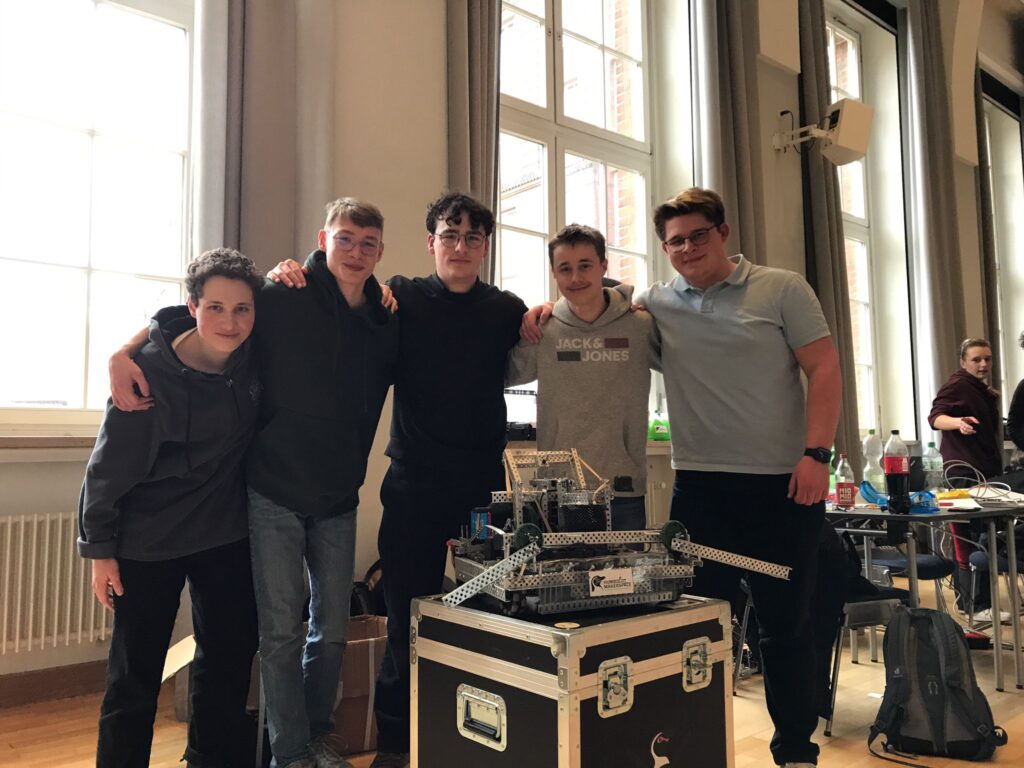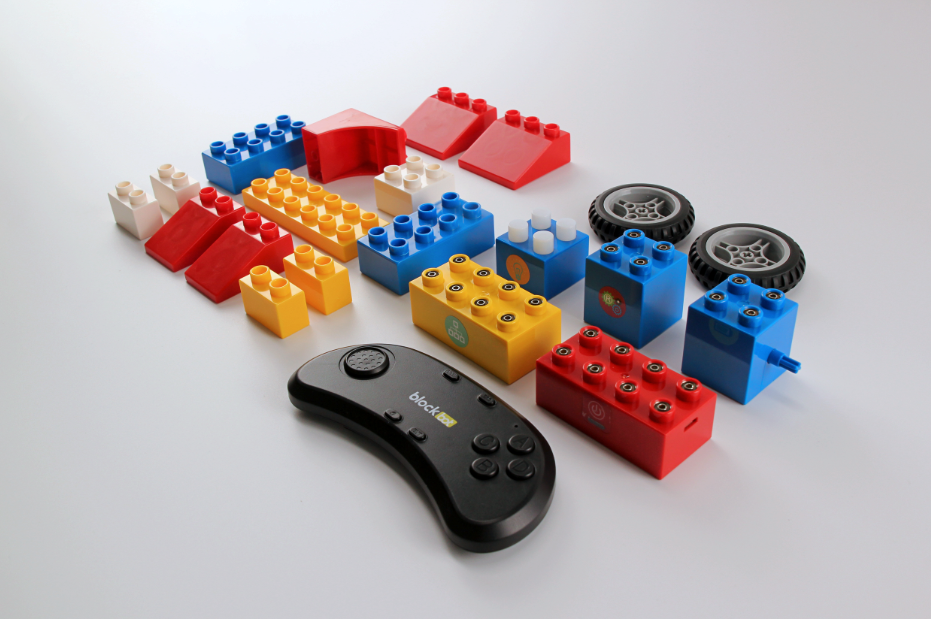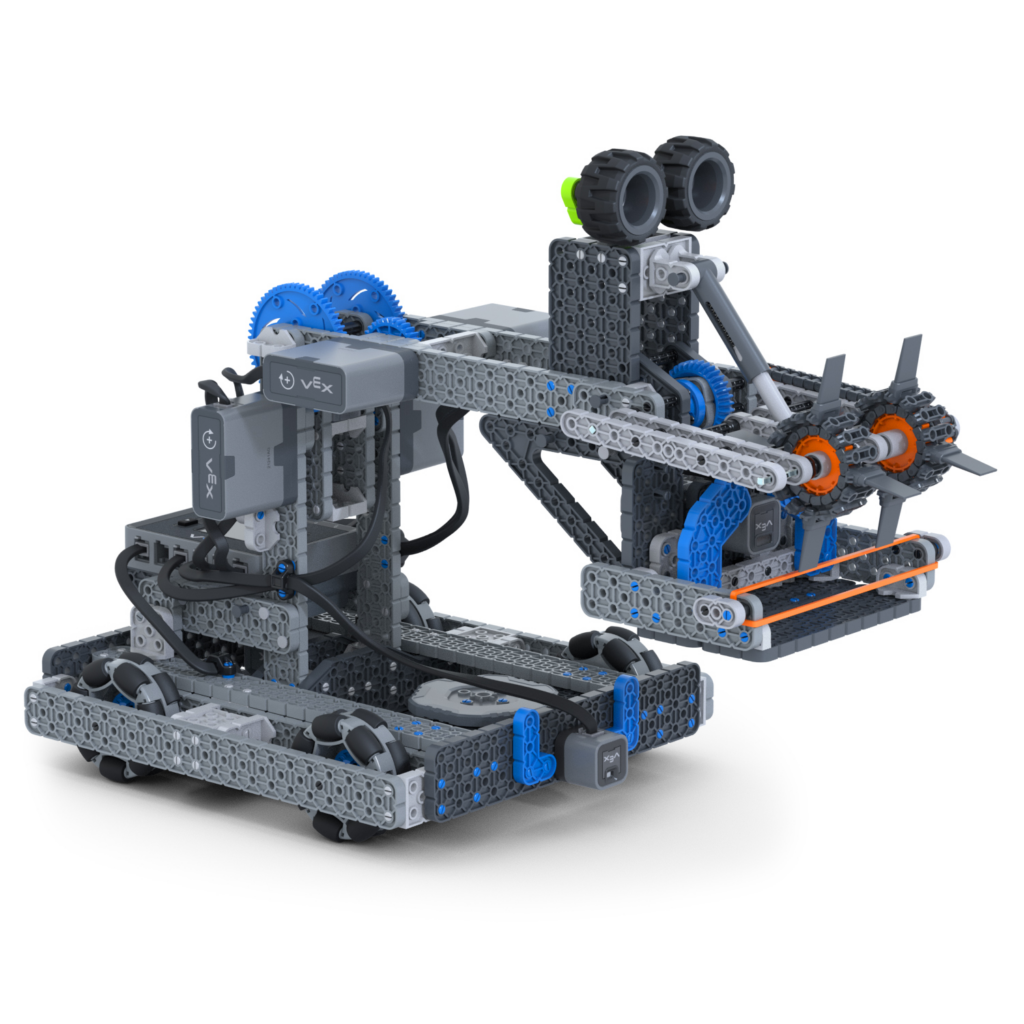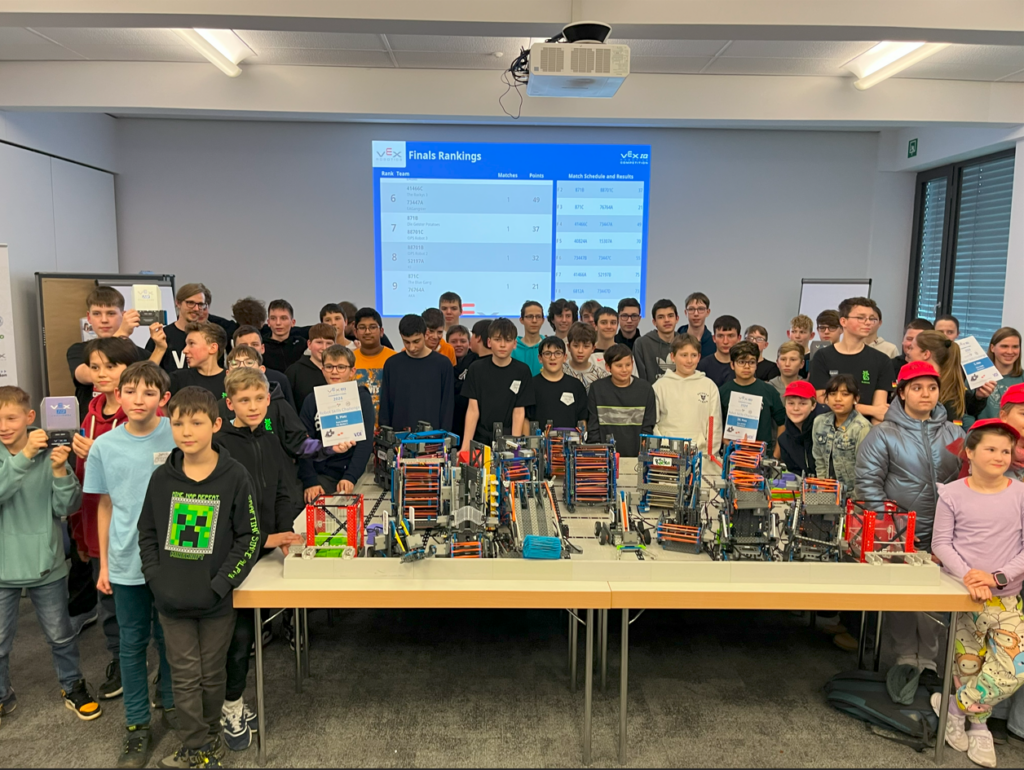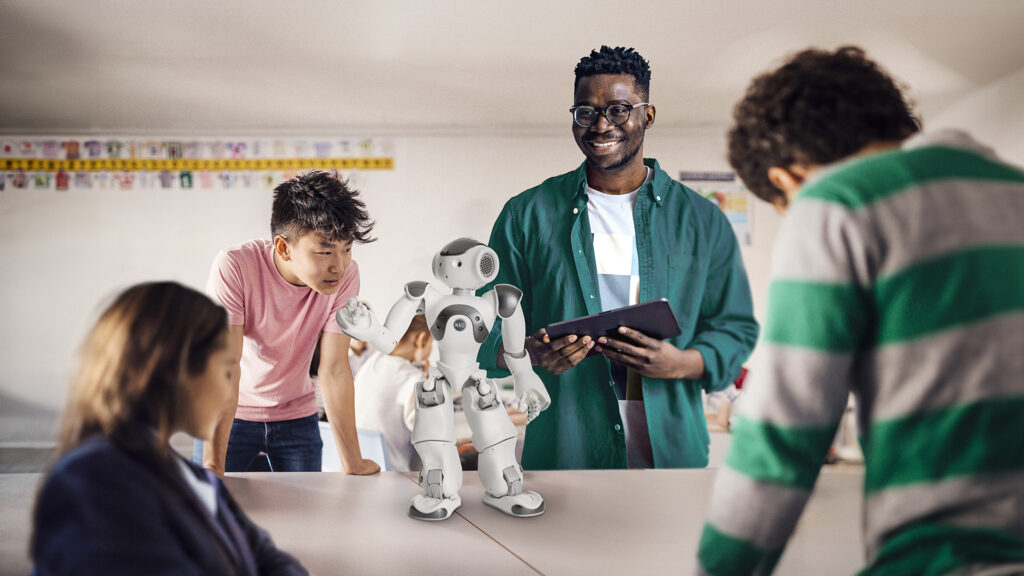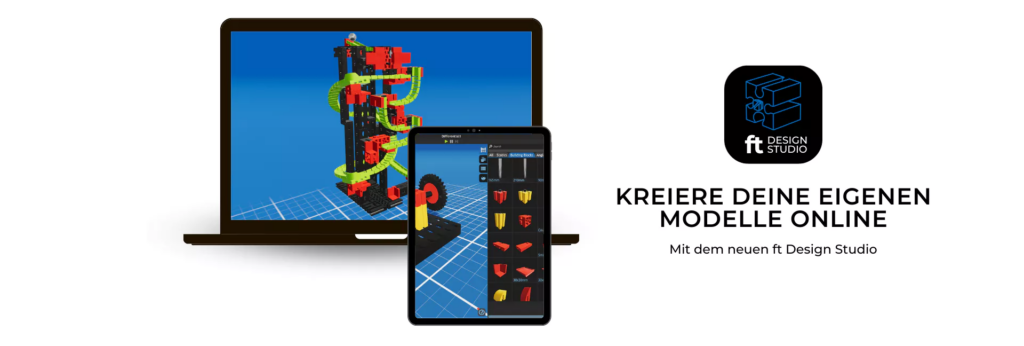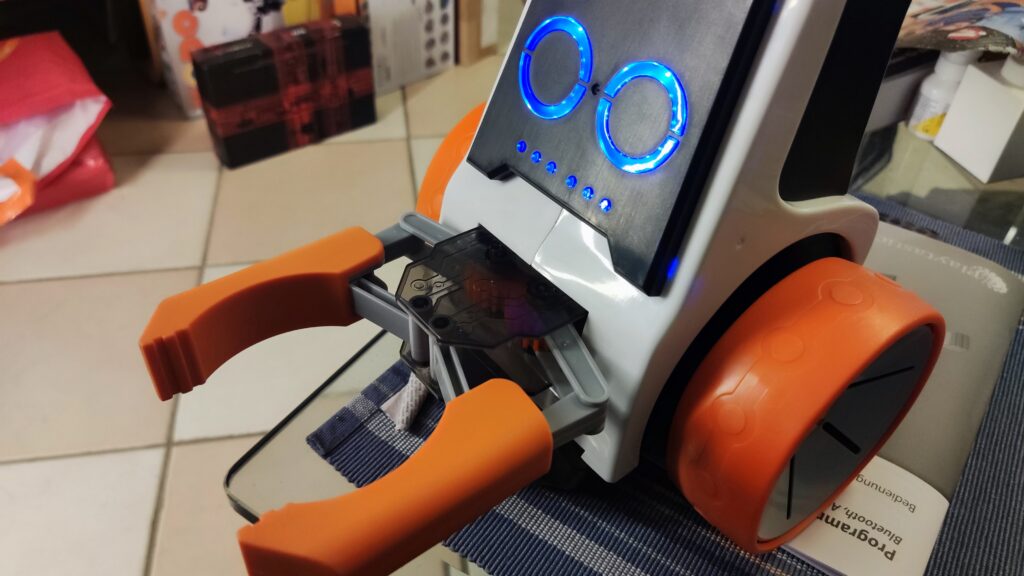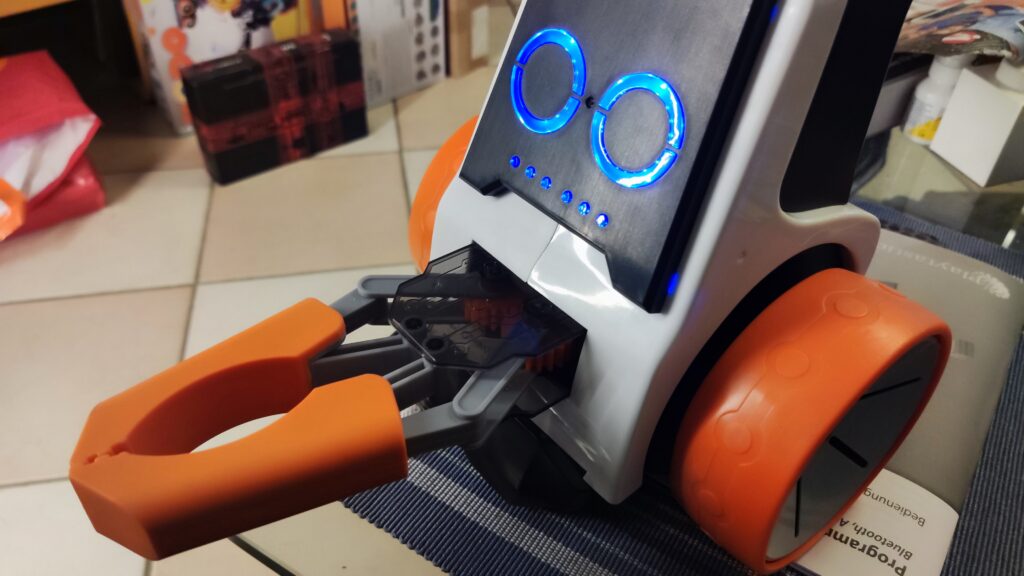Robotikwettbewerbe in Hamburg: Gewinner sind Allianzen aus Berlin und Brandenburg sowie Rockenhausen und Berlin
▪ Sieger der VEX Robotics Competition: Alexander-von-Humboldt-Gymnasium (Berlin) und Heinitz-Gymnasium (Rüdersdorf)
▪ Sieger der VEX IQ Challenge: IGS Rockenhausen (Rheinland-Pfalz) und BEST-Sabel (Berlin)
▪ Knapp 35 Teams trafen beim Deutschland-Finale vom 6. bis 8. März aufeinander
▪ Schüler der IGS Rockenhausen (Rheinland-Pfalz) und des Oberkochener Ernst-Abbe Gymnasiums sicherten sich die Tickets für die VEX Robotics World Championship in Dallas
Hamburg, 8. März 2024. Hektische Betriebsamkeit hat in den vergangenen drei Tagen an der Hochschule für Angewandte Wissenschaften Hamburg (HAW Hamburg) geherrscht. Etwa 150 Schüler von allgemeinbildenden Schulen und Berufsschulen aus ganz Deutschland schraubten und programmierten dort an Robotern, die sie in den vergangenen Monaten selbst konstruiert hatten. Ihr Ziel: Für die Endrunden der deutschen VEX-Roboterwettbewerbe wollten sie aus ihren Babys noch das Optimum herausholen. Insgesamt gab es 14 Pokale zu holen, mit denen schließlich zwölf verschiedene Teams ausgezeichnet wurden.
Gewinner der kooperativen Turnierwettbewerbe bei den German Masters Bei der VEX Robotics Competition (VRC) setzten sich das Alexander-von-Humboldt Gymnasium (Berlin) und das Heinitz-Gymnasium (Rüdersdorf) durch. Die VEX IQ Challenge (VIQC) entschied ein Bündnis der IGS Rockenhausen (Rheinland-Pfalz) und der BEST-Sabel Bildungseinrichtungen (Berlin) für sich.
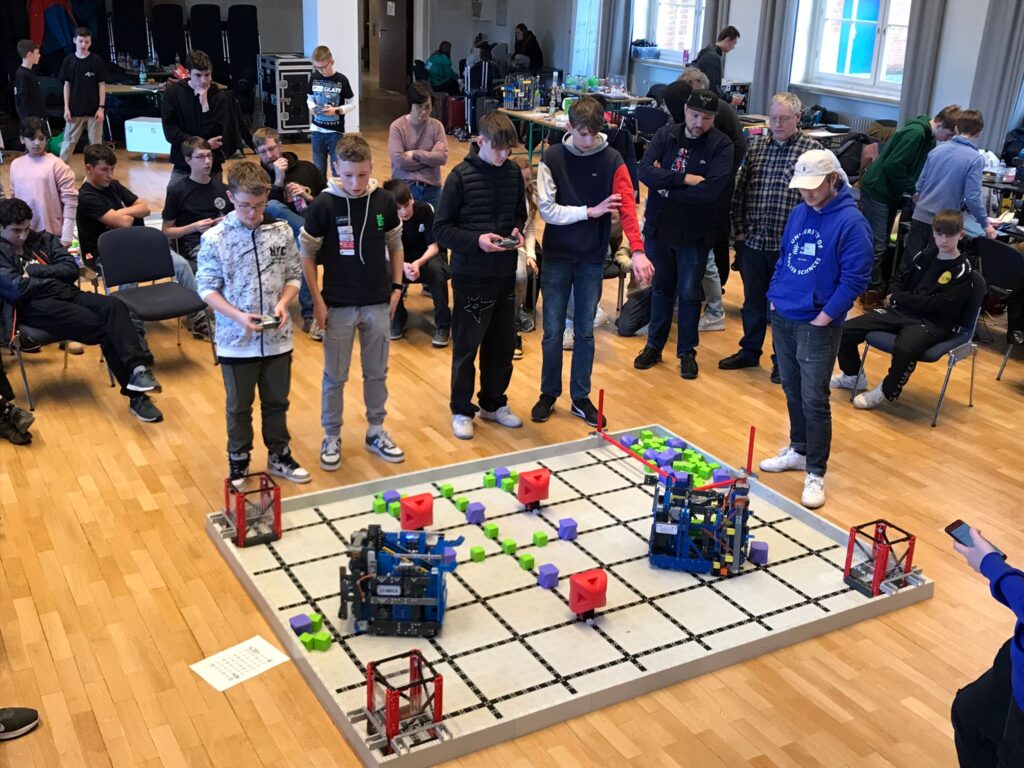
Über die German Masters besteht die Möglichkeit, sich für die VEX Worlds zu qualifizieren. Diese „Weltmeisterschaften“ finden vom 25. April bis 3. Mai in Dallas (US-Bundesstaat Texas) mit 1.000 Teams aus 50 Ländern statt. Voraussetzung für den Flug nach Übersee: der Gewinn der Excellence Awards. Eine Jury vergibt sie auf Basis des Abschneidens im Wettbewerb und weiterer Kriterien wie etwa den Fähigkeiten eines Roboters im Vergleich. Nach Dallas geht es für Schüler der IGS Rockenhausen (High und Middle School) und des Ernst-Abbe-Gymnasiums in Oberkochen (Middle und Elementary School).
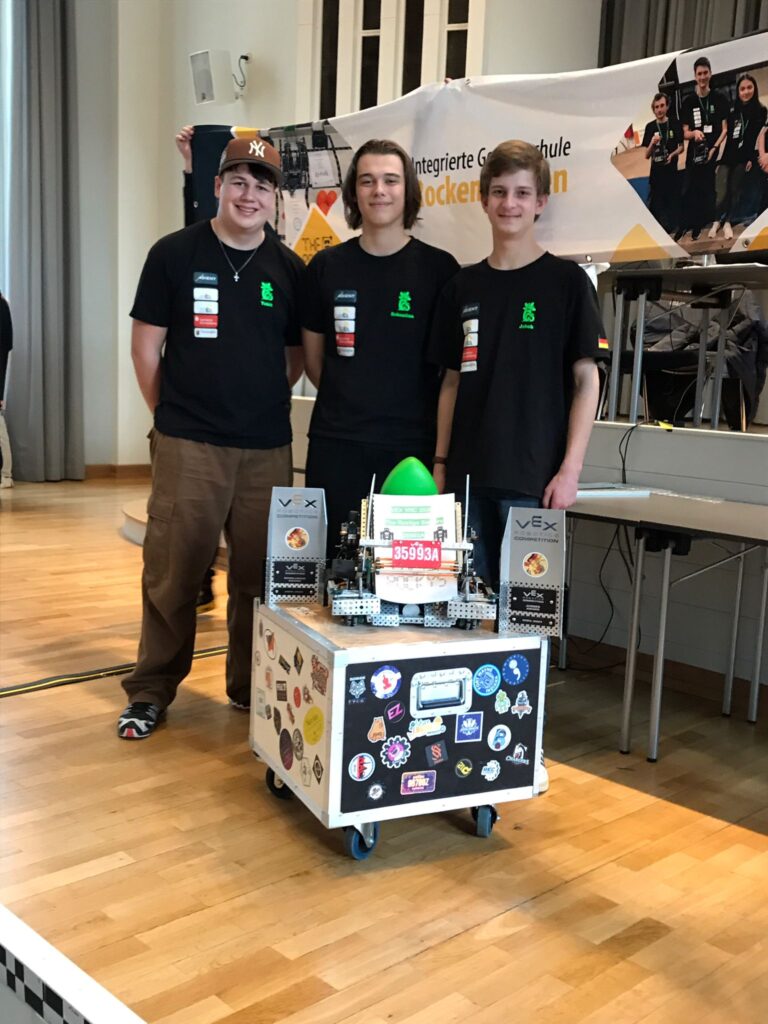
Die weltweiten Wettbewerbe der in den USA beheimateten Robotics Education & Competition (REC) Foundation werden hierzulande vom Hamburger Verein roboMINT organisiert.
An der VEX Robotics Competition (VRC) können Schüler im Alter ab elf Jahren teilnehmen. Ein Team besteht aus mindestens zwei Schülern, es tritt in Allianzen gegen andere Teams an. Ziel eines Spiels in autonomen und ferngesteuerten Fahrmodi ist es unter anderem, so viele Triballs wie möglich ins eigene Tor oder in die eigene Offensive Zone zu bringen.
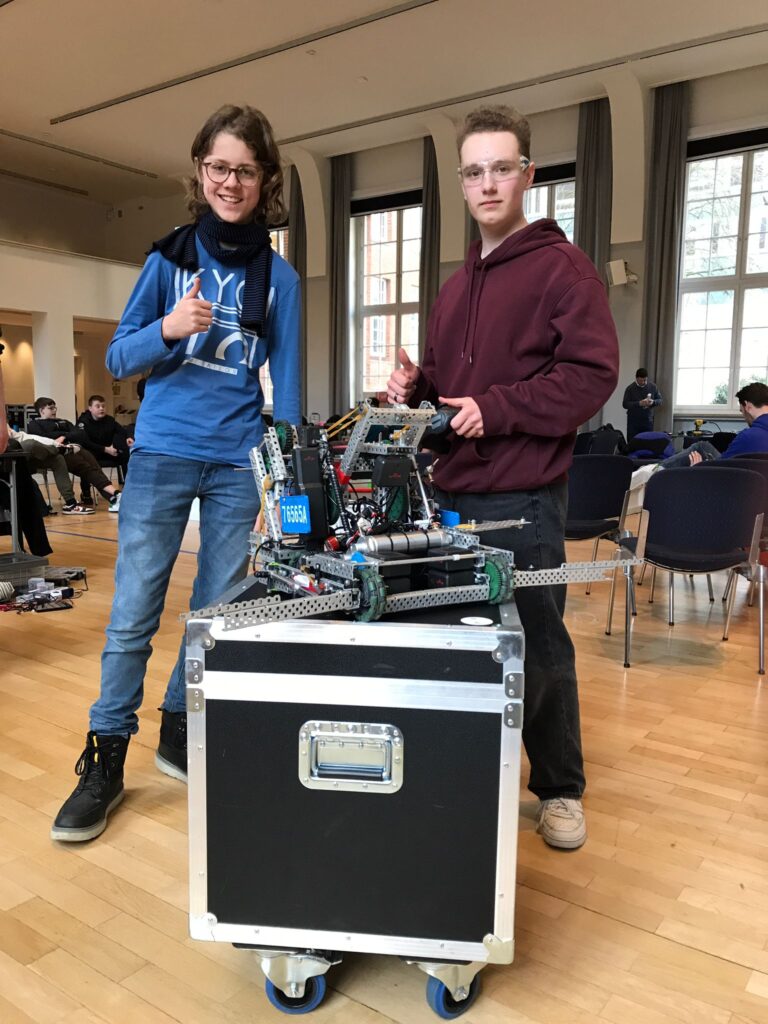
Im Rahmen der VEX IQ Challenge (VIQC) sind Schüler im Alter von acht bis 15 Jahren zugelassen. Ein Team besteht aus mindestens zwei Schülern, es tritt zusammen mit einem anderen Team an. Ziel des Spiels ist es unter anderem, möglichst viele Blöcke in Tore zu verfrachten. Punkte gibt es auch, wenn der Roboter am Ende eines Matches in der „Supply Zone“ geparkt wird.
